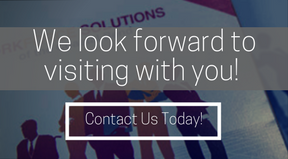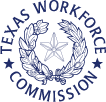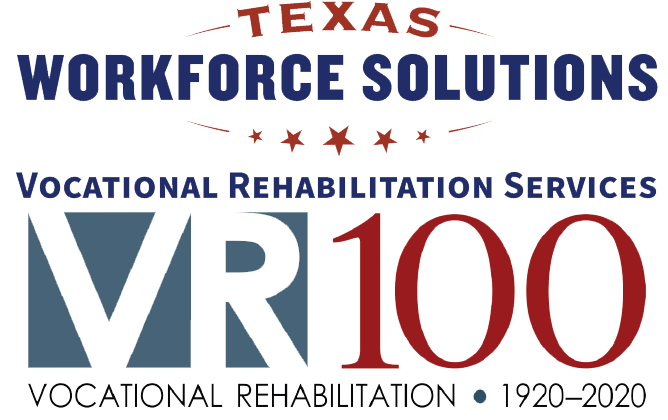Why Hire People with Disabilities?
Competence and Flexibility
They are vital skills that employers seek in new hires. Today more than ever, businesses need people with a demonstrated ability to adapt to different situations and circumstances. And perhaps more than any other group, people with disabilities possess precisely these attributes. On a daily basis, people with disabilities must think creatively about how to solve problems and accomplish tasks. In the workplace, this resourcefulness translates into innovative thinking, fresh ideas and varied approaches to confronting business challenges and achieving success.
While research shows that people with disabilities make excellent employees, not all employers know how to effectively recruit, hire and retain such individuals. That’s where this booklet comes in. It’s a quick reference guide outlining the advantages of hiring people with disabilities, along with four simple steps to increasing the inclusiveness of your workforce. With numerous resources and Web links, the following pages are a helpful starting point for organizations looking to benefit from the talents of qualified individuals with disabilities. Download the booklet here.
Access the resources below to learn why hiring employees with disabilities makes good business sense.
Tax Benefits for Private Employer
Several tax incentives are available to help employers cover accommodation costs for employees with disabilities and/or to make their workplaces accessible. The Job Accommodation Network keeps a list of active tax incentives for businesses.
Human Capital Benefits for Federal Employers.
The Federal government has specific hiring rules that allow certain flexibilities in hiring people with disabilities and certain veterans with disabilities.
Recruiting Employees with Disabilities
The first step in tapping this labor pool is effective recruitment. The following are practical resources to help with the process.
Be Proactive.
Expand your outreach to target qualified candidates who will expand your talent pool. Visit the Disability:IN website at https://disabilityin.org/ for ideas and resources.
Ensure Access.
For personalized guidance on making your recruitment activities totally accessible, contact the Job Accommodation Network, a free service for employers and others, at https://askjan.org/
Build Tomorrow’s Talent Pipeline.
Mentoring activities and internships targeting youth and college students with disabilities can help you cultivate talent for the future.
- Career-Focused Mentoring for Youth
- Cultivating Leadership: Mentoring Youth with Disabilities
- Workforce Recruitment Program (WRP)
- Apprenticeships & Internships for Students with Disabilities (PDF)
Connecting Those In Need To Resources.
Young people need to be connected to programs, services, activities, and supports that help them gain access to chosen post-school options. All youth may also need one or more of the following: Connection to other services and opportunities (e.g., recreation), Mental and physical health services, Transportation, Tutoring, Financial planning and management, Post-program supports thorough structured arrangements in postsecondary institutions and adult service agencies
Interviewing & Hiring Employees with Disabilities
The successful employment of people with disabilities requires accessible hiring processes and an understanding of the legal environment in which hiring takes place. The following resources can help.
General Guidance.
As always, the goal of the interviewing and hiring process is to identify individuals who have the best mix of skills and attributes for a particular job. For more information on how to ensure that all qualified individuals can participate in this process, review Opening Doors to All Candidates: Tips for Ensuring Access for Applicants with Disabilities.
Job Advertisements & Applications.
For wording tips and samples of accessible online applications, check the following resources:
- Employers’ Practical Guide to Reasonable Accommodation Under the ADA
- Employers Practical Guide to Reasonable Accommodation During the Hiring Process
- Making the Online Application Process Accessible
Interviews.
To be qualified job candidates, individuals with disabilities—like all other applicants—must have the necessary qualifications for the job (i.e., education, training, experience, skills, and/or licenses) and be able to perform the essential functions or duties of the job. When interviewing candidates, keep in mind this basic rule: Ask applicants about their abilities, not their disabilities.
- Focus on Ability: Interviewing Applicants with Disabilities
- Accommodation Scenarios for the Interviewing Process
- Job Application/Interview Stage Dos and Don’ts
Employers are as perplexed by the social aspects of interviewing someone with a disability as they are by the legal concerns. Here are some basic guidelines for keeping a job interview focused on the applicants’ qualifications.
When Interviewing An Applicant With Any Disability
Don’t start the interview by trying to elicit the applicants’ needs for accommodation. The interview should focus on whether the candidate is qualified for the job in question. Focus on the applicants’ abilities. If there is a need for a discussion concerning accommodations, this should come later.
- Don’t ask: “What happened to you?” or “How will you get to work?”
- Don’t ask questions in terms of disability, such as, “Do you have a mental condition that would preclude you from qualifying for this position?”
- Don’t ask, “How often will you require leave for treatment of your condition?”
- Do ask job-related questions: “How would you perform this particular task?”
- However, you may state the organization’s attendance requirements and ask if the applicant can meet them.
- Always offer to shake hands. Do not avoid eye contact, but don’t stare either.
It is the applicant’s responsibility to request accommodations. Don’t ask the job applicant, “Will you need accommodations?” or “What kind of accommodations will you need?” However, if you have concerns over an applicant’s ability to perform an essential function of a job, given the applicant’s obvious or disclosed disability, you can ask the applicant how he or she would perform the task.
Treat the applicant as you would any other adult — don’t be patronizing. If you don’t usually address applicants by their first name, don’t make an exception for the applicants with disabilities.
If you feel it appropriate, offer the applicant assistance (for example, if an individual with poor grasping ability is having trouble opening a door), but don’t assume it will necessarily be accepted. Don’t automatically give assistance with asking first.
When Interviewing An Applicant Who Uses A Wheelchair
Don’t lean on the wheelchair.
- Get on the same eye level with the applicant if the conversation lasts more than a minute or so.
- Don’t push the wheelchair unless you are asked to do so.
- Keep accessibility in mind. Is that chair in the middle of your office a barrier to a wheelchair user? If so, move it aside.
- Don’t be embarrassed to use such phrases as “Let’s walk over to the plant.”
When interviewing an applicant who is intellectually disabled
- Use simple, concrete language, but don’t use “baby talk.”
- When giving instructions or directions, proceed slowly.
- Be patient and repeat directions if necessary.
- Ask the applicant to summarize the information you have given to make sure it was understood.
- Give positive feedback whenever possible and appropriate.
When interviewing an applicant who is blind
- Immediately identify yourself and others present; cue a handshake verbally or physically.
- Use verbal cues; be descriptive in giving directions. (“The table is about five steps to your left.”)
- Don’t be embarrassed to use such phrases as “Do you see what I mean?”
- Don’t shout.
- Keep doors either open or closed; a half-open door is a serious hazard.
- Offer assistance with mobility; let the applicant grasp your left arm, usually just above the elbow. Again, ask first, and do not be surprised is assistance is refused.
- Do not touch an applicant’s cane. Do not touch a guide dog when it is in a harness. Resist the temptation to pet a guide dog.
When interviewing an applicant who is deaf
- You may need to use a physical signal to get the applicant’s attention.
- If the applicant is lip reading, enunciate clearly, keep your mouth clear of obstructions, and place yourself where there is ample lighting. Keep in mind that an accomplished lip reader will be able to clearly understand only 30-35 percent of what you are saying.
- The best method to communicate is to use a combination of gestures and facial expressions.
- Don’t shout.
- If you don’t understand what the applicant is telling you, don’t pretend you did. Ask the person to repeat the sentence(s).
- If necessary, use a sign language interpreter. But keep in mind that the interpreter’s job is to translate, not to get involved in any other way. Therefore, always face and speak directly to the applicant, not the interpreter. Don’t say to the interpreter, “Tell her…..”
Helping Your Employees with Disabilities Achieve Workplace Success
Once an employee with a disability is a part of the team, there are many resources available to help employers ensure workplace productivity, health, and safety.
Effective Communication.
Employers and co-workers may be concerned that they will say the wrong thing, ask an inappropriate question, or unintentionally offend an applicant or colleague with a disability. Here are two resources with some excellent tips:
ADA Compliance – Rules and Regulations
All employees need the right tools and work environment to effectively perform their jobs. “Reasonable accommodations” are modifications or adjustments to jobs, work environments, or workplace policies that enable qualified employees with disabilities to perform the fundamental duties of their jobs and have equal access to benefits available to employees without disabilities. The following resources can help you understand reasonable accommodations, which are often easier and less expensive to implement than commonly believed.
Office of Disability Employment Policy (ODEP) & The Job Accommodation Network (JAN)
The ODEP provides technical assistance to employers through the Job Accommodation Network (JAN). The site is a valuable resource for fostering an inclusive workforce and ensuring legal compliance regarding disability employment.
Job Accommodation Network (JAN) – List of Publications
- Searchable Online Accommodation Resource (SOAR)
- Employer’s Practical Guide to Reasonable Accommodation
ADA Compliance
The Job Accommodation Network provides an ADA Library containing a list of publications and guidelines for providing reasonable accommodations. However, this may not be a complete list of requirements. If you would like local assistance in navigating ADA policy and compliance, please contact us or reach out to one of our Career Centers and ask to speak to a Vocational Rehabilitation Services (VRS) Specialist. Here are a few examples of what is available through the JAN website.
- Your Responsibilities as an Employer
- ADA Guide for Small Businesses
- Accommodating Employees with Mental Health Conditions
- Federal Employment of People with Disabilities
- Veterans and Service Members Accommodation and Resources
Safety & Emergency Preparedness and People with Disabilities
Safety & Emergency Preparedness for Employees with Disabilities. A number of helpful resources can help employers ensure workplace safety and implement emergency management procedures that include people with disabilities, such as the following:
- Emergency Preparedness and People with Disabilities
- Preparing the Workplace for Everyone: Accounting for the Needs of People with Disabilities – A Framework of Emergency Preparedness Guidelines for federal Agencies
- Effective Emergency Preparedness Planning: Addressing the Needs of Employees with Disabilities
- Employers’ Guide to Including Employees with Disabilities In Emergency Evacuation Plans
Retention of Employees with Disabilities
Finally, employers must take steps to keep their employees happy, healthy, and professionally fulfilled. The resources below address career development for people with disabilities, disability-related leave, and return-to-work issues.
Career Development.
One of the main reasons workers leave their jobs is lack of career advancement opportunities. To learn how to ensure the inclusion of employees with disabilities in training and professional growth opportunities, read Career Development for People with Disabilities.
Medical- and Disability-Related Leave.
The following are useful resources to help employers and human resources professionals sort out which leave laws apply when employees have a disability, injury, and/or chronic illnesses:
Return-to-Work.
Consult the following for information on transitioning ill, injured, or disabled employees returning to work:
- Managing Accommodations During the Great Return to Office
- Uniformed Services Employment & Reemployment Act (USERRA). Visit the following web site for an on-line course and general information on this law that details your rights and responsibilities for reemploying employees who were called for active duty.
Additional Employer Resources
DOL Resources on Employing People with Disabilities
- Office of Disability Employment Policy (ODEP), U.S. Department of Labor
ODEP is a policy agency that provides national leadership by developing and influencing disability-related employment policy and practice affecting the employment of people with disabilities. - Job Accommodation Network (JAN)
JAN is a free service of ODEP that provides productivity tools and strategies for hiring, accommodating, and retaining employees with disabilities: What does JAN do for employers? - Customized Employment Strategies
General Employment Resources
Additional employer resources directly or indirectly related to employees with disabilities:
- elaws Advisors
- Innovative Workplace Safety Accommodations for Hearing-Impaired Workers
- Ergonomics Resources
- Career One-Stop: Resources for Business and Human Resources
- Nondiscrimination notices and posters
- WIRED (Workforce Innovation in Regional Economic Development)
- DBTAC (Disability & Business Technical Assistance Center)
Related Initiatives & Employer Networks
- ODEP Alliance Initiative – A cooperative program that enables organizations committed to improving disability workplace practices to work with ODEP to develop and implement model policies and initiatives that increase recruiting, hiring, advancing, and retaining workers with disabilities.
- Diversity:IN – A national organization that represents employers using a “business to business” strategy to promote the
business imperative of including people with disabilities in the workforce. (formerly USBLN) - Society for Human Resource Management (SHRM) – The world’s largest professional association devoted to human resource management.








